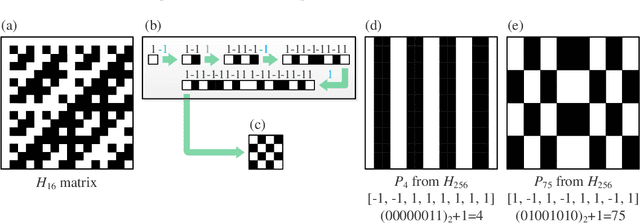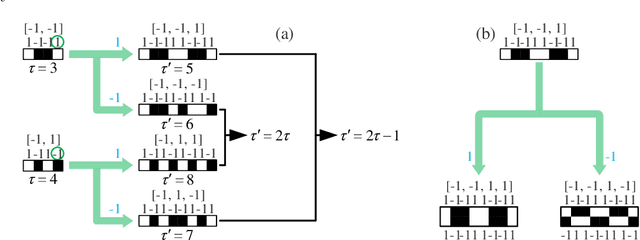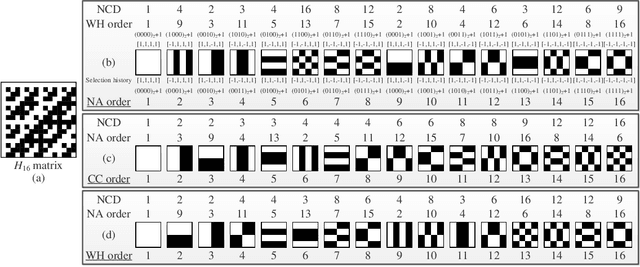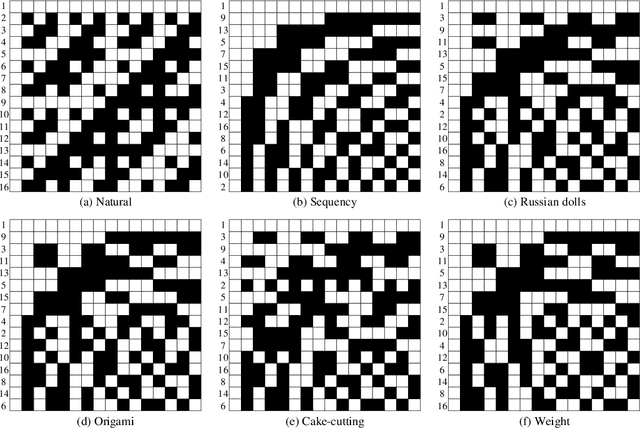Chong Cao
Single-pixel imaging based on weight sort of the Hadamard basis
Mar 09, 2022



Abstract:Single-pixel imaging (SPI) is very popular in subsampling applications, but the random measurement matrices it typically uses will lead to measurement blindness as well as difficulties in calculation and storage, and will also limit the further reduction in sampling rate. The deterministic Hadamard basis has become an alternative choice due to its orthogonality and structural characteristics. There is evidence that sorting the Hadamard basis is beneficial to further reduce the sampling rate, thus many orderings have emerged, but their relations remain unclear and lack a unified theory. Given this, here we specially propose a concept named selection history, which can record the Hadamard spatial folding process, and build a model based on it to reveal the formation mechanisms of different orderings and to deduce the mutual conversion relationship among them. Then, a weight ordering of the Hadamard basis is proposed. Both numerical simulation and experimental results have demonstrated that with this weight sort technique, the sampling rate, reconstruction time and matrix memory consumption are greatly reduced in comparison to traditional sorting methods. Therefore, we believe that this method may pave the way for real-time single-pixel imaging.
Machine Learning-based Prediction of Porosity for Concrete Containing Supplementary Cementitious Materials
Dec 13, 2021



Abstract:Porosity has been identified as the key indicator of the durability properties of concrete exposed to aggressive environments. This paper applies ensemble learning to predict porosity of high-performance concrete containing supplementary cementitious materials. The concrete samples utilized in this study are characterized by eight composition features including w/b ratio, binder content, fly ash, GGBS, superplasticizer, coarse/fine aggregate ratio, curing condition and curing days. The assembled database consists of 240 data records, featuring 74 unique concrete mixture designs. The proposed machine learning algorithms are trained on 180 observations (75%) chosen randomly from the data set and then tested on the remaining 60 observations (25%). The numerical experiments suggest that the regression tree ensembles can accurately predict the porosity of concrete from its mixture compositions. Gradient boosting trees generally outperforms random forests in terms of prediction accuracy. For random forests, the out-of-bag error based hyperparameter tuning strategy is found to be much more efficient than k-Fold Cross-Validation.
 Add to Chrome
Add to Chrome Add to Firefox
Add to Firefox Add to Edge
Add to Edge